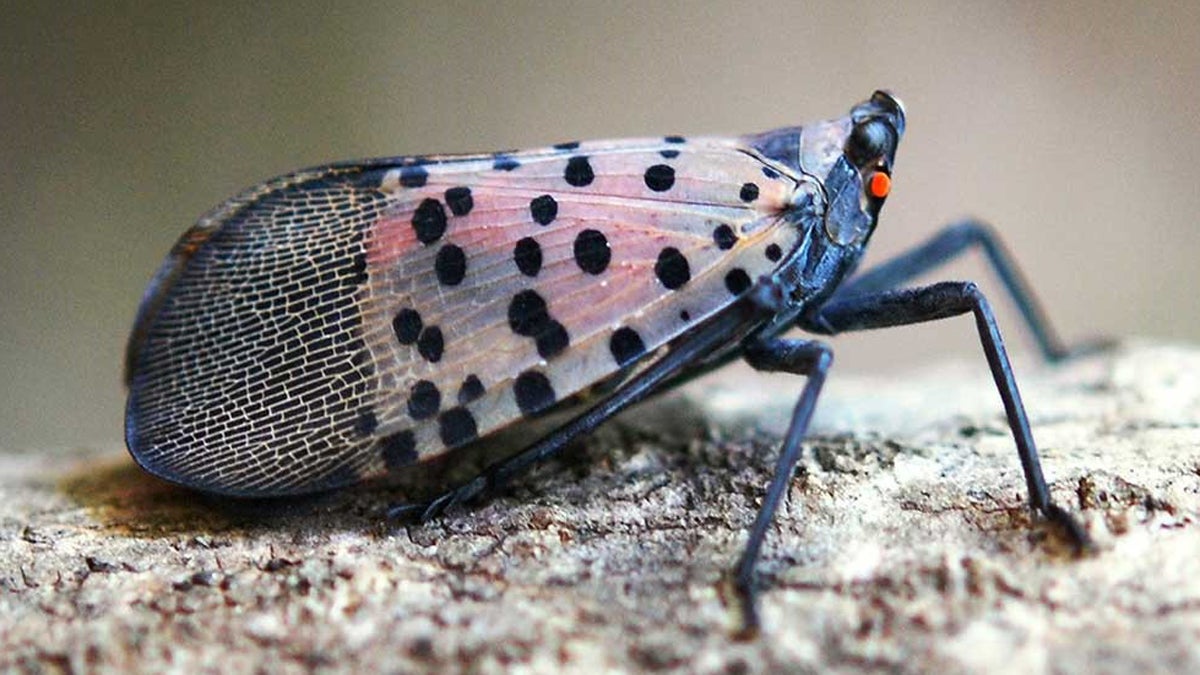Invasive insect spreads beyond Pennsylvania farms and orchards to backyards
The U.S. Department of Agriculture will send $17.5 million in emergency funds to Pennsylvania to prevent the spotted lanternfly from spreading further.

The spotted lanternfly is spreading through Southeast Pennsylvania. It was spotted for the first time in the United States in Berks County. (Pennsylvania Department of Agriculture)
Add another invader to the list of destructive insects that have infiltrated Pennsylvania: The spotted lanternfly has joined the ranks of emerald ash borers and brown marmorated stink bugs.
Marianne Lieberman, the owner of Maple Springs Vineyard in Southeastern Pennsylvania, has been dealing with the spotted lanternflies for more than a year.
“We could have 100 to 200 spotted lanternflies feeding on the trunk of a vine,” she said. “It’s epidemic, and the numbers are amazing.”
The U.S. Department of Agriculture will be sending the state $17.5 million to stop the lanternflies from spreading. Part of that money will go toward research to study the lanternflies.
That news encouraged Lieberman, who said a solution is urgently needed.
“It’s no longer the small grape farmers’ problem,” she said. “It’s everybody’s problem.”
Penn State entomologist Tom Baker termed it “the weirdest, most pernicious insect I’ve ever seen.” And they appear to be migrating south, with recent appearances in Delaware and Virginia.
The red and black spotted lanternflies are native to China and feed on sap, essentially sucking plants dry. They go after grapes, but researchers have seen them invading apple trees as well. In December, Pennsylvania state officials quarantined Christmas tree growers in 13 counties to prevent the insect eggs from traveling to other states.
The lanternflies excrete a sugary substance that researchers call honeydew, said Julie Urban, an evolutionary biologist at Penn State. The honeydew then feeds a black mold that can cover plant leaves and block access to sunlight.
“Then the actual surface of the tree and the surrounding ground and understory are so blackened, to me it looks like someone burned it,” she said.
It’s still unclear what the economic damage will be for Pennsylvania’s agriculture industry. But Fred Strathmeyer, a deputy secretary at the Pennsylvania Department of Agriculture, said several farmers told him they fear they’ll go out of business if the lanternflies are not stopped.
And the insects are not just affecting fruit growers.
In the fall, Strathmeyer visited a daycare center close to Boyertown, Pennsylvania, where the lanternflies had swarmed.
After the center sprayed insecticide, “there were literally thousands and thousands of dead insects,” he said. “But there were still thousands and thousands of insects still flying around.”
The staff couldn’t let the children play outside.
Strathmeyer says the threat from the spotted lanternfly is right up there with the emerald ash borer and the brown marmorated stink bug.
Scientists are testing pesticides as a short-term solution, said Urban.
For the long term, they’re looking at parasitic wasps that could go after lanternfly larvae, as well as targeting some bacteria that lanternflies depend on. But Urban said it could take years before they come up with a long-term, biological solution.
WHYY is your source for fact-based, in-depth journalism and information. As a nonprofit organization, we rely on financial support from readers like you. Please give today.





